Let me guess—you’re standing in the children’s book aisle at 8 PM because your go-to bedtime story suddenly isn’t working anymore? Been there. Last Tuesday, my 5-year-old declared that “Goodnight Moon” was “for babies” and had a complete meltdown. Cue frantic googling at bedtime.
Nearly half (46%) of American children aged 7 or younger read a bedtime story before sleep, making it the most popular pre-bedtime activity according to Ipsos research. But here’s what that statistic doesn’t tell you: choosing the right bedtime story isn’t just about grabbing any book from the shelf. It’s about understanding how different stories affect your kid’s emotional state and whether they’ll actually fall asleep or bounce off the walls for another hour.
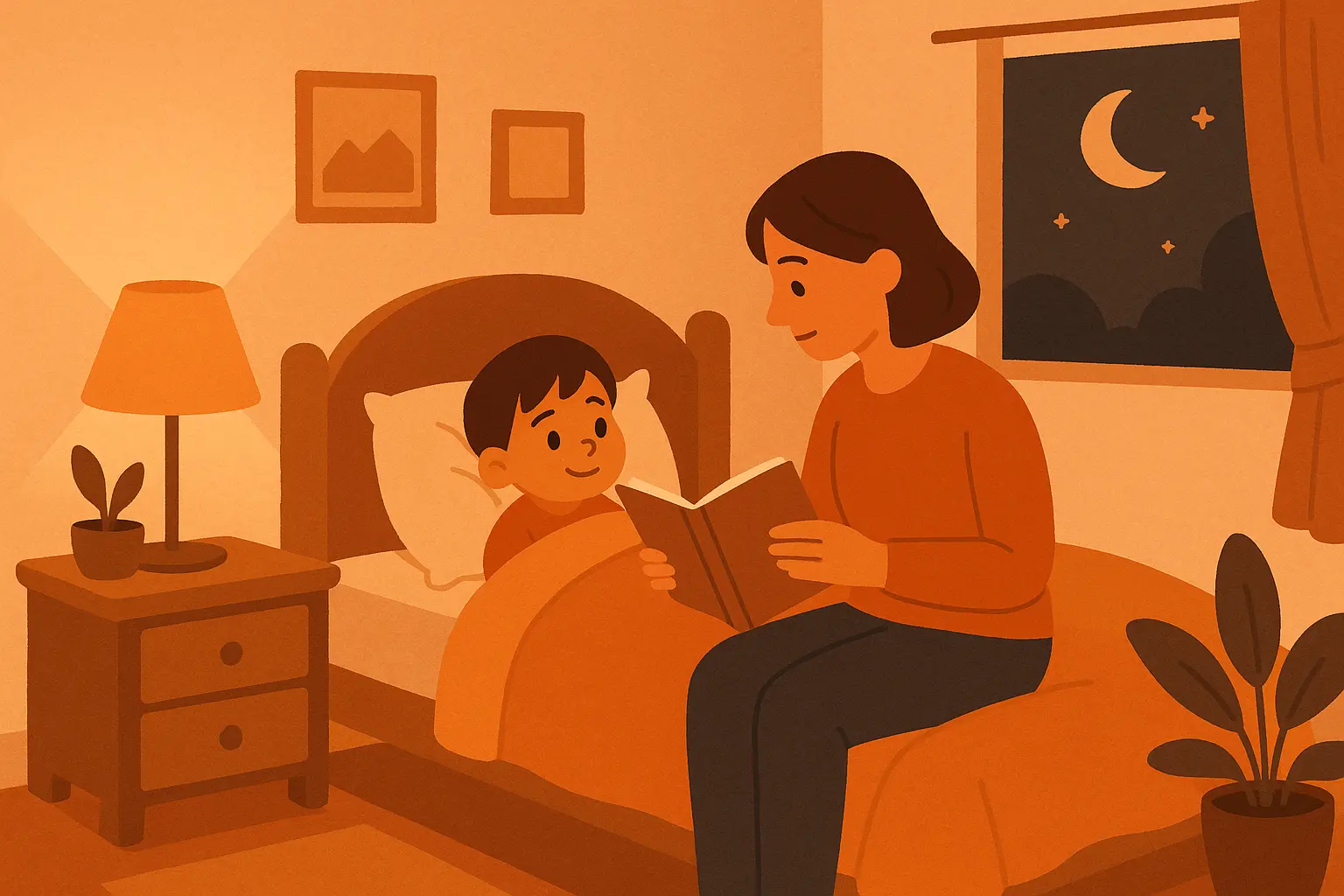
Table of Contents
-
How to Pick Stories That Actually Work (Without the Bedtime Drama)
-
Classic Stories That Never Fail (Even on Rough Nights)
-
Books That Help Kids Deal With Big Feelings
-
Fun Stories That Won’t Wire Them for Hours
-
Nature and Science Stories for Curious Minds
-
Stories from Around the World That Teach Empathy
-
Books That Get Kids Involved (Without Getting Them Hyped Up)
-
Why These Stories Actually Work for Sleep
-
The Simple Science Behind Bedtime Reading
-
Building Your Family’s Go-To Story Collection
TL;DR
-
Don’t give a 3-year-old a chapter book at 8 PM—trust me, it’s a rookie mistake that leads to bedtime battles
-
The best bedtime stories calm kids down instead of getting them excited, with happy endings and no scary cliffhangers that cause 2 AM visits to your bed
-
Good bedtime stories sneak in learning through fun—teaching new words, helping kids understand emotions, and sharing life lessons without feeling like homework
-
Interactive books with repetitive phrases keep kids engaged while creating special bonding time between you and your child
-
Stories featuring different cultures help kids develop empathy and see that families come in all shapes and sizes
-
Stick to stories that take 5-15 minutes to read—long enough to wind down but short enough to fit into your routine without exhaustion
-
Classic comfort stories like “Goodnight Moon” work because they’re predictable and cozy, making kids feel safe and secure
-
Modern books about feelings help today’s kids deal with anxiety, big emotions, and everyday challenges in age-appropriate ways
How to Pick Stories That Actually Work (Without the Bedtime Drama)
Look, choosing bedtime stories takes more thought than just grabbing whatever’s closest to the bed. The perfect bedtime story needs to keep your kid interested without turning them into a bouncing ball right before sleep. I’ve learned this through many bedtime battles with my own kids, and understanding these basics will save you from a lot of nighttime drama.
Age Really Does Matter (More Than You Think)
Your kid’s age determines everything about what stories will work. Here’s what actually works by age, learned through many bedtime battles:
Toddlers (2-3 years): Keep it simple, keep it short, keep it repetitive. They love familiar stuff and patterns they can predict. Don’t try to get fancy here—their attention spans are about as long as a commercial break.
Preschoolers (4-5 years): A little drama is okay, but happy endings are non-negotiable. They can handle slightly more complex stories but still need that security blanket feeling when the book closes.
School-age kids (6-8 years): They can handle bigger ideas and moral lessons, but save the scary stuff for daylight hours. They want stories that make them think but don’t keep them up worrying.
When picking age-appropriate content, understanding how to write a story using brain science can help you recognize why certain stories click with different ages.
|
Age Group |
Story Length |
What Works |
What They Love |
|---|---|---|---|
|
Toddlers (2-3) |
3-5 minutes |
Simple words, same patterns, stuff they know |
Daily routines, animals, basic feelings |
|
Preschoolers (4-5) |
5-10 minutes |
Clear stories, characters they relate to, gentle problems that get solved |
Friendship, family, mild adventures |
|
School-age (6-8) |
10-15 minutes |
Complex themes, life lessons, character growth |
Identity, different cultures, problem-solving |
How Stories Affect Sleep (The Stuff That Actually Matters)
Here’s the thing: the ideal bedtime story should be like a bridge from daytime chaos to nighttime calm. Stories with intense drama, scary parts, or cliffhangers can trigger anxiety and make falling asleep way harder.
Instead, look for stories that make kids feel safe, secure, and satisfied when they end. Characters should face problems they can handle, with solutions that show kids their world is predictable and safe.
Think about “Where the Wild Things Are.” Max meets monsters, but they’re more goofy than scary, and the story ends with him back home where his dinner’s still warm—basically a perfect symbol that no matter what happens, home and family are always there. That circular journey gives kids excitement within safety.
Sneaking in Learning Without Making It Feel Like School
Good bedtime stories teach stuff naturally through fun stories. They build vocabulary through rich language, introduce new concepts through character adventures, and teach emotional skills through situations kids can relate to. The key is being sneaky about it—kids should learn through enjoying the story, not feeling like they’re in a classroom at 8 PM.
Stories that teach friendship, kindness, problem-solving, and managing big feelings work best when these lessons come naturally from what characters do and what happens to them.
Getting the Timing Right
Bedtime stories should fit comfortably into your routine—usually 5-15 minutes tops. The pacing should match the transition from active day energy to sleepy nighttime vibes. Good bedtime stories often start with gentle engagement, keep interest through the middle, then gradually slow down toward peaceful endings. This natural rhythm helps kids’ minds and bodies get ready for sleep.
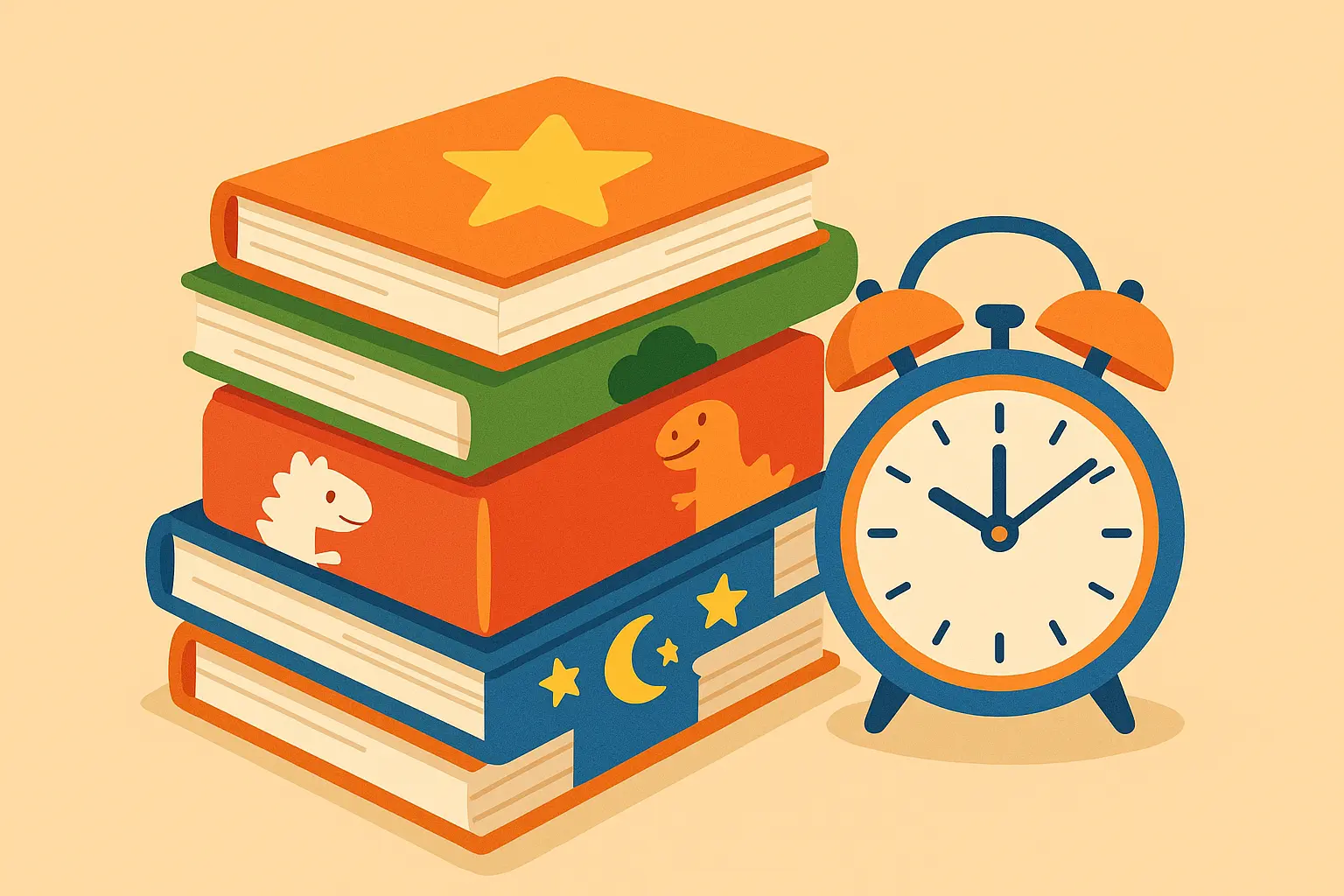
Classic Stories That Never Fail (Even on Rough Nights)
Some stories become classics because they consistently work their magic across generations. These books have proven they can calm anxious minds and create positive sleep associations. I’ve watched these bedtime stories work on countless kids, including my own stubborn ones, and they never seem to lose their power to soothe.
1. Goodnight Moon by Margaret Wise Brown
This one’s magic, I swear. Something about saying goodnight to random stuff in a room just works. The repetitive “goodnight” pattern helps kids develop their own pre-sleep rituals while the pictures gradually get darker, showing the progression toward sleep.
The simple rhymes and familiar bedroom objects provide security and predictability. Kids often memorize this quickly, letting them “read” along and feel accomplished while winding down. My nephew used to add his own items: “Goodnight dirty socks, goodnight Legos on the floor.” Kids get it.
2. The Very Hungry Caterpillar by Eric Carle
Following a caterpillar’s transformation into a butterfly combines learning (counting, days of the week, healthy eating) with the comforting theme of growth and change. The predictable structure and beautiful collage pictures engage kids while the transformation shows them that change can be beautiful instead of scary.
The story’s full circle—from egg to butterfly—creates a sense of completion that works perfectly for bedtime closure. Kids learn that growing and changing is natural and beautiful, not frightening.
3. Where the Wild Things Are by Maurice Sendak
Max throws a tantrum, goes on an imaginary adventure, then comes home to dinner that’s still warm. It’s basically every kid’s emotional journey in 10 minutes. Plus, the monsters are more goofy than scary. The story validates big feelings while showing that home and family provide ultimate security and unconditional love.
The circular journey (home to Wild Things and back) creates safety within adventure. Kids learn they can explore their emotions and imagination while knowing they’ll always return to safety and love.
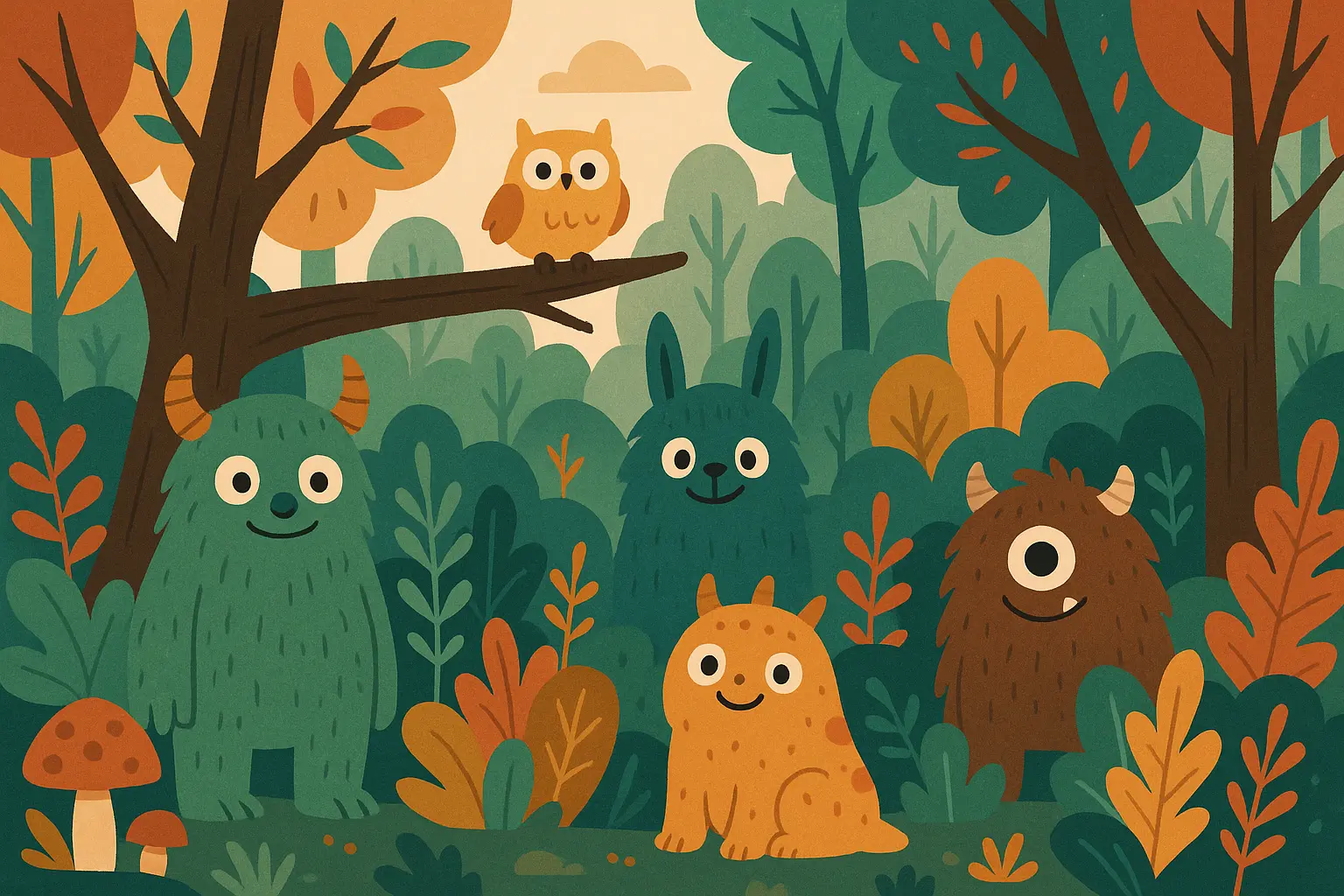
4. Corduroy by Don Freeman
A toy bear’s search for his missing button teaches about friendship, belonging, and unconditional love through Lisa’s determination to take him home despite his flaws. This story addresses kids’ fears about not being good enough or loveable as they are.
The department store setting feels familiar to many kids, while Corduroy’s gentle personality and Lisa’s kindness show positive relationships. The story ends with belonging and acceptance—perfect themes for bedtime security.
5. The Runaway Bunny by Margaret Wise Brown
This is basically a love letter to anxious kids (and their exhausted parents). It’s the literary equivalent of a warm hug. A mother bunny promises to always find her little one, no matter where he goes, through increasingly creative scenarios.
Each escape attempt gets more fantastical (turning into a fish, a rock, a bird), but mom’s love stays constant and creative. Kids learn that parental love goes beyond physical presence and will always bring them back to safety.
These classic bedtime stories often use the same patterns found in traditional folktale story examples, using repetition and circular journeys to create comfort and closure.
Books That Help Kids Deal With Big Feelings
Today’s kids face unique emotional challenges that need modern storytelling approaches. These bedtime stories give kids tools for understanding and managing emotions while keeping bedtime peaceful. I’ve found these particularly helpful during my kids’ more challenging phases—you know, those weeks when everything makes them cry.
6. The Way I Feel by Janan Cain
This book helps kids identify and express feelings like silly, angry, scared, and happy through situations they actually recognize. Each emotion gets specific examples kids know from their own lives. The book shows that all emotions are normal and temporary—feelings come and go like weather.
When reading this with your kid, pause at each emotion and ask, “When did you feel this way today?” It creates opportunities for emotional processing without feeling like therapy. A kid might share feeling frustrated when their tower fell down, then connect to the book’s message that angry feelings pass.
7. In My Heart: A Book of Feelings by Jo Witek
An interactive book with cut-outs and fold-outs that lets kids physically explore emotions. Kids can open flaps and discover hidden elements, making abstract feelings more concrete and manageable.
The hands-on parts provide gentle stimulation that’s calming rather than exciting when used right at bedtime. The book teaches that all feelings are valid and temporary—crucial lessons for emotional regulation.
8. The Invisible String by Patrice Karst
This comforting story explains how love connects us to people we care about, even when we’re apart. The invisible string concept directly addresses separation anxiety—a common bedtime worry. The story gives kids a concrete way to understand the abstract concept of love and connection. When parents travel or kids feel lonely, they can remember their invisible string and feel comforted.
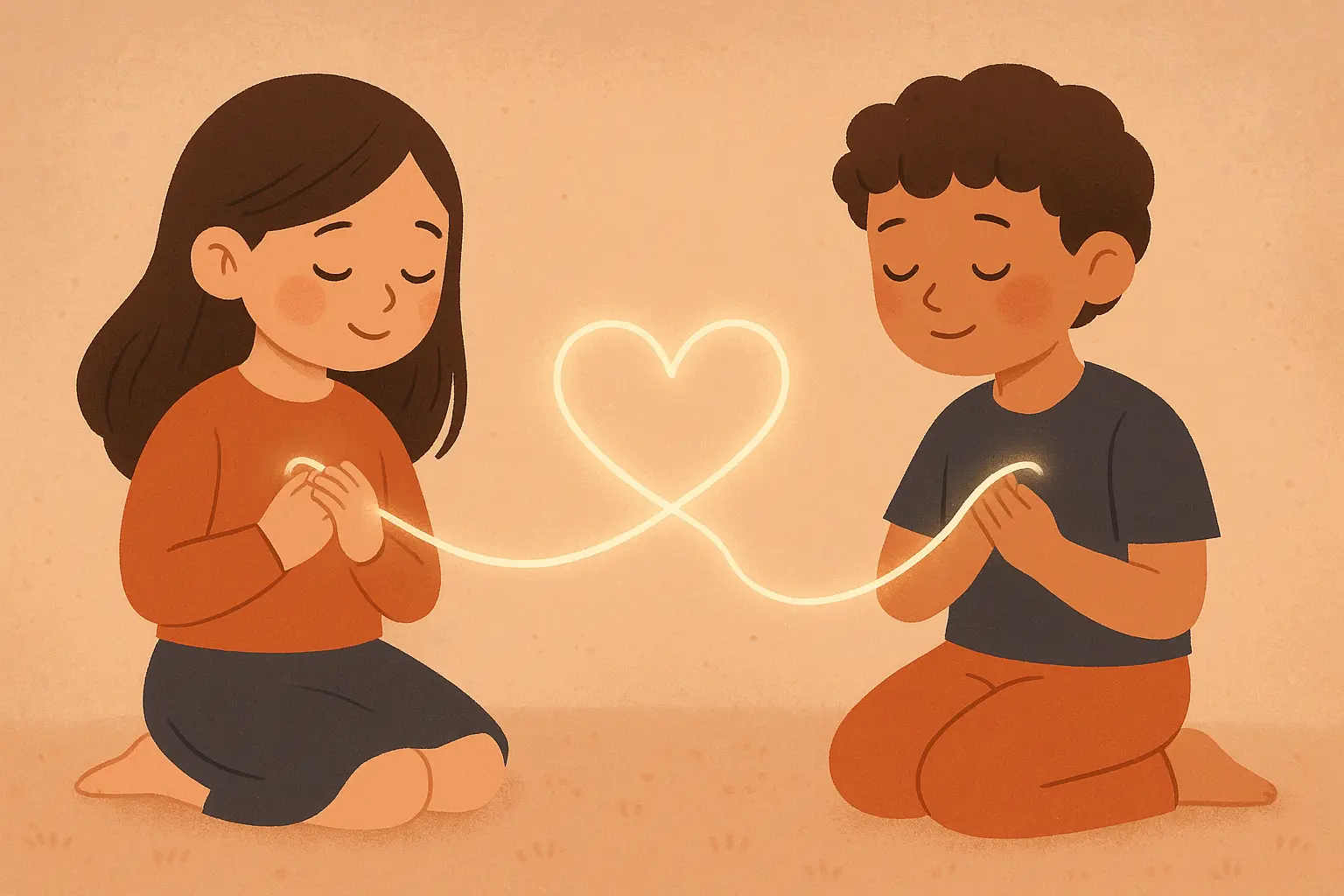
9. The Rabbit Listened by Cori Doerrfeld
When Taylor’s block tower falls down, different animals offer different types of help, but only the rabbit truly listens. This story teaches the value of empathy and being present over trying to “fix” everything immediately.
The gentle approach to disappointment and the rabbit’s patient listening show healthy emotional support. Kids learn that sometimes being heard and understood matters more than having problems solved quickly.
10. What Should Danny Do? by Adir Levy
A “choose your own adventure” style book that teaches kids about choices and consequences while getting them involved in decision-making. Each choice leads to different outcomes, helping kids understand how their decisions affect their experiences.
The interactive format keeps kids engaged while teaching responsibility and critical thinking. All the story paths lead to appropriate conclusions, so bedtime reading ends positively no matter what choices get made.
Fun Stories That Won’t Wire Them for Hours
Adventure stories can work beautifully at bedtime when they balance excitement with security and end peacefully. These stories prove you don’t need to sacrifice imagination for tranquility—you just need to pick the right kind of adventure.
11. The Polar Express by Chris Van Allsburg
A magical train journey to the North Pole captures the wonder of believing in magic while keeping that dreamy, ethereal quality perfect for bedtime. The circular journey (home to North Pole and back) provides security within adventure.
The story celebrates belief and wonder without being overstimulating. The bell’s magic reminds kids that having faith in beautiful things is valuable, while the return home ensures security and closure.
12. Where Do Diggers Sleep at Night? by Brianna Caplan Sayres
This rhyming book imagines where construction vehicles rest, combining kids’ obsession with big machines and bedtime themes. Each vehicle finds its own special sleeping place, connecting daytime interests with nighttime rest.
The rhythmic text and bedtime focus make this perfect for vehicle-obsessed kids who might otherwise resist sleep. The story validates their interests while redirecting energy toward rest and sleep preparation.
13. Dragons Love Tacos by Adam Rubin
A ridiculous story about dragons’ love for tacos (but definitely not spicy salsa) that’s genuinely funny for both kids and parents. The humor is gentle and absurd rather than exciting or scary.
The unexpected premise and silly consequences teach cause-and-effect thinking through pure entertainment. The light tone and ridiculous situations create laughter without overstimulation—perfect for bedtime bonding.
|
Story Type |
Calming Features |
Fun Features |
Best Ages |
|---|---|---|---|
|
Magical Journey |
Returns home safely |
Magical adventure |
4-8 years |
|
Gentle Humor |
Non-scary situations |
Silly surprises |
3-7 years |
|
Familiar Objects |
Recognizable themes |
Creative twists |
2-6 years |
|
Predictable Patterns |
Repetitive structure |
Interactive elements |
2-5 years |
14. The Day the Crayons Quit by Drew Daywalt
Duncan’s crayons write letters explaining their complaints, encouraging creativity while teaching about different perspectives and problem-solving. Each crayon has legitimate grievances that Duncan must address thoughtfully.
The creative premise sparks imagination while the problem-solving elements teach empathy and consideration. The resolution shows how understanding different viewpoints leads to better solutions—valuable lessons delivered through humor.
15. Journey by Aaron Becker
A wordless picture book where a lonely girl draws a door with a red crayon and enters a magical world. The detailed illustrations invite exploration and discussion while celebrating imagination and creativity.
Without words, the story can be as long or short as needed for your bedtime routine. The magical elements inspire wonder while the girl’s return home provides security and closure.
These adventure bedtime stories show how story theme examples like courage, imagination, and homecoming create engaging yet calming stories for kids.
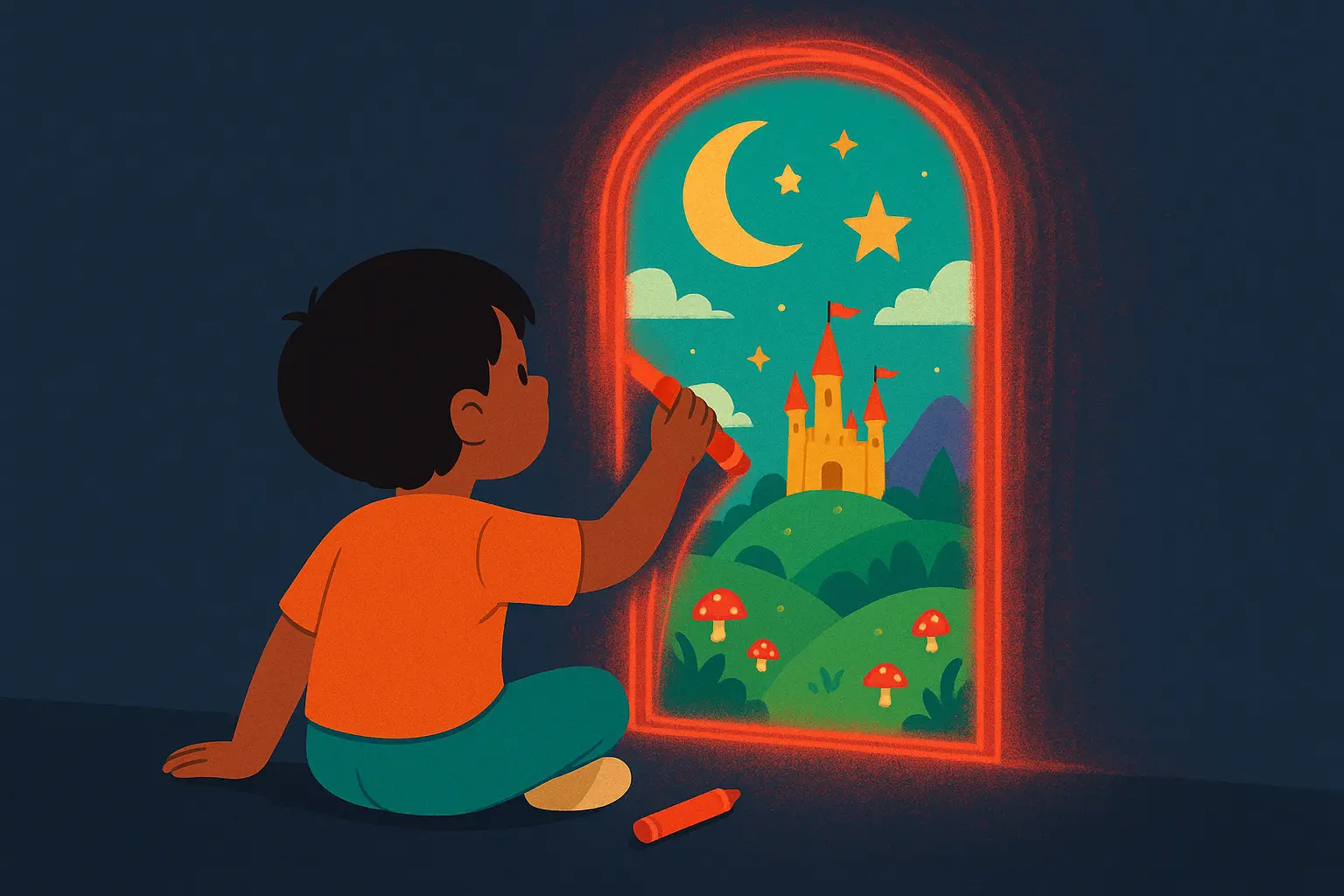
Nature and Science Stories for Curious Minds
Science and nature stories make perfect bedtime content when they focus on wonder and gentle learning rather than exciting discoveries. These stories satisfy curious minds while keeping that peaceful atmosphere essential for sleep preparation.
16. The Great Kapok Tree by Lynne Cherry
A man sleeping under a kapok tree hears from various rainforest animals about why the tree should be saved. This story teaches environmental awareness through gentle persuasion rather than scary warnings about environmental destruction.
The sleeping man creates a calm, dreamy atmosphere while the animals’ voices provide different perspectives on conservation. Kids learn about rainforest ecosystems and taking care of our planet through beautiful illustrations and peaceful storytelling.
17. The Magic School Bus Series (Choose Carefully)
Ms. Frizzle’s educational adventures make science accessible and fun when you pick the gentler episodes like “Inside the Earth” or “In the Time of Dinosaurs.” These focus on wonder and discovery rather than dangerous situations.
The familiar characters and educational content satisfy curious minds while the fantastical elements maintain that magical quality right for bedtime. Choose episodes that end with the class safely back at school.
18. The Tiny Seed by Eric Carle
Following a seed’s journey through seasons to become a flower teaches about plant life cycles, patience, and perseverance through natural processes. The story shows how small beginnings can lead to beautiful outcomes.
The seasonal progression and natural growth process create a gentle rhythm perfect for bedtime. Kids learn about patience and natural development while enjoying Carle’s distinctive collage illustrations.
19. National Geographic Readers: Bedtime for Animals
Real photographs show how different animals sleep, combining factual learning with bedtime themes in an age-appropriate format. Kids discover that all creatures need rest, making their own bedtime feel natural and universal.
The factual content satisfies curious minds while the sleep theme reinforces bedtime routines. Beautiful photography provides visual interest without overstimulation, and the information can be adapted to your child’s attention span.
20. The Moon Book by Gail Gibbons
An informative yet gentle exploration of moon phases, lunar cycles, and space that satisfies curiosity while maintaining bedtime calm. The moon’s presence in the night sky makes this topic naturally perfect for evening reading.
The scientific information is presented simply and beautifully, helping kids understand the moon they see outside their bedroom windows. The gentle approach to space science creates wonder without fear or overstimulation.

Stories from Around the World That Teach Empathy
Exposing kids to diverse cultures through bedtime stories builds empathy and global awareness while teaching universal values. These stories introduce different traditions and perspectives while focusing on themes that connect all families.
21. The Story of Ferdinand by Munro Leaf
A Spanish bull who prefers smelling flowers to fighting teaches about staying true to yourself and choosing peace over aggression. Ferdinand’s gentle nature challenges stereotypes while celebrating individual differences.
The peaceful message and Ferdinand’s contentment with simple pleasures create perfect bedtime themes. Kids learn that being different is totally okay and that choosing peace over conflict shows strength, not weakness.
22. Mama Panya’s Pancakes by Mary and Rich Chamberlin
Set in Kenya, this story about sharing and community shows how generosity multiplies when a mother worries about having enough pancakes for unexpected guests. The Kenyan setting introduces kids to different cultures while focusing on universal themes of hospitality and community.
The story shows how sharing creates abundance rather than scarcity—a beautiful lesson for bedtime reflection. The warm community relationships and successful feast provide security and positive closure.
23. The Empty Pot by Demi
A Chinese folktale about honesty when Ping’s flower seed won’t grow teaches that truthfulness is more valuable than fake success. When the emperor gives kids seeds to grow, only Ping’s honesty about his failure earns the reward.
The story validates kids’ fears about failure while teaching that honesty brings better outcomes than lying. The emperor’s wisdom and Ping’s reward provide satisfying resolution and clear moral guidance.
24. Thunder Boy Jr. by Sherman Alexie
A Native American boy wants a name that reflects who he is rather than just his father’s name, exploring identity and cultural connection. The story addresses universal themes of identity and family relationships within Native American cultural context.
The boy’s desire for his own identity resonates with kids developing their sense of self. The loving family relationships and cultural pride provide positive representation while the resolution celebrates both individual identity and family connection.
25. Last Stop on Market Street by Matt de la Peña
CJ and his grandmother’s bus journey through their city reveals beauty in everyday life and the importance of community service and gratitude. The urban setting and diverse characters provide representation often missing from kids’ literature.
The grandmother’s wisdom helps CJ see beauty in ordinary things, teaching gratitude and perspective. The story ends with community service, showing how helping others creates meaning and connection—perfect themes for bedtime reflection.
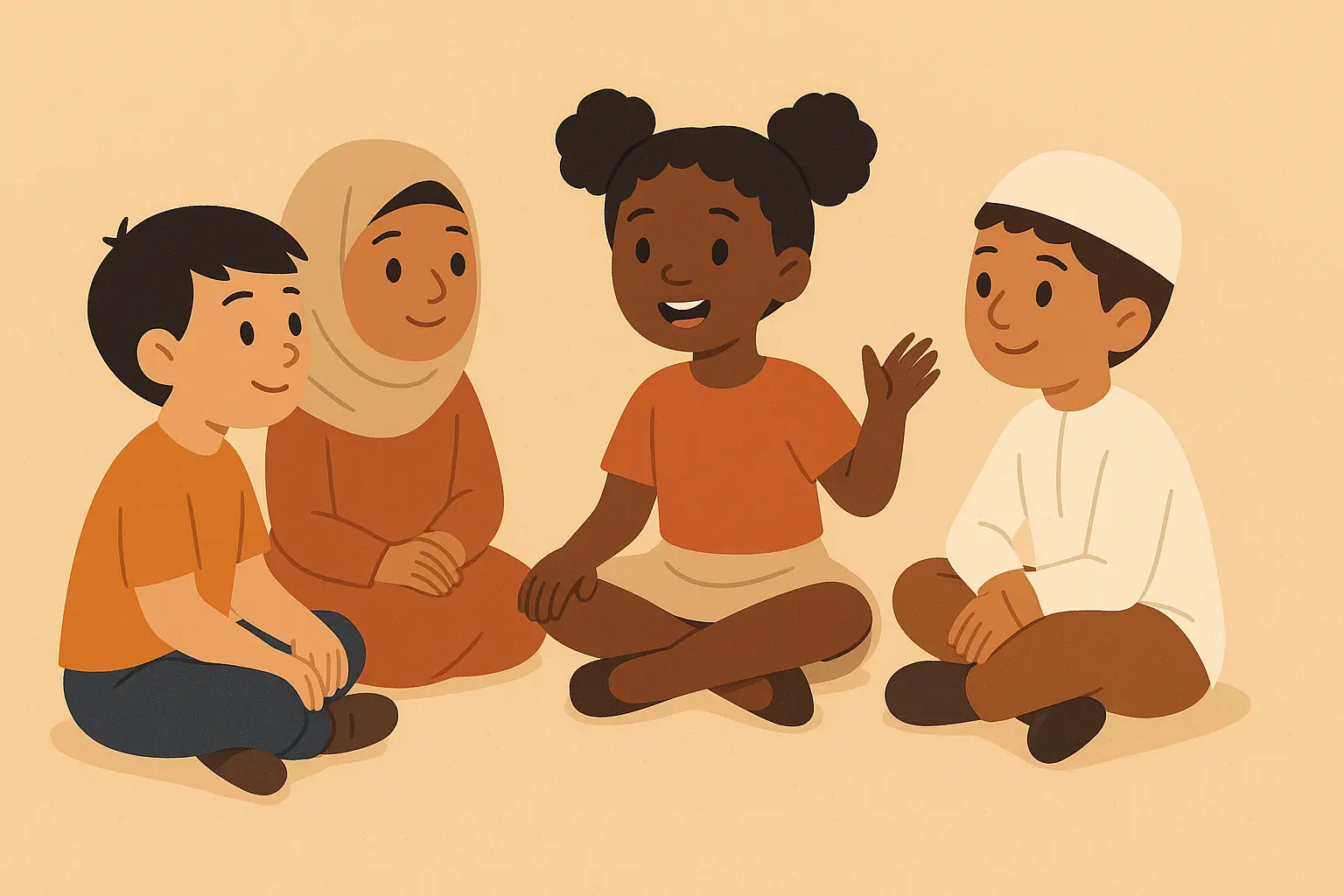
Books That Get Kids Involved (Without Getting Them Hyped Up)
Interactive stories can enhance bedtime bonding when they encourage gentle participation rather than energetic activity. These stories invite kids to join in through repetitive phrases and predictable patterns while keeping calm energy.
Brown Bear, Brown Bear, What Do You See? by Bill Martin Jr.
This repetitive, rhythmic story invites kids to predict and participate in the pattern. Each page features a different colored animal that “sees” the next one, creating an engaging call-and-response experience perfect for bedtime participation.
The predictable structure lets kids “read” along, building confidence while winding down. The gentle rhythm and familiar animals create security through repetition and recognition.
We’re Going on a Bear Hunt by Michael Rosen
While adventurous, this story’s repetitive structure and sound effects (“swishy swashy,” “splash splosh”) invite participation without overstimulation when read with appropriate bedtime pacing. The circular journey returns the family safely home.
Pro tip: try whispering the sound effects and using gentle hand motions instead of energetic actions. “Swishy swashy” becomes a soft back-and-forth hand movement, while “splash splosh” becomes gentle patting motions. This keeps the interactive fun while maintaining appropriate energy levels for sleep prep.
Chicka Chicka Boom Boom by Bill Martin Jr.
Letters of the alphabet climb up a coconut tree in this rhythmic story. Kids can participate by saying the repetitive phrases and learning letter recognition through the musical language and predictable pattern.
The alphabet theme provides educational value while the rhythmic text creates a soothing beat. The tree’s bending and letters’ tumbling provide gentle excitement without scary consequences.
Five Little Monkeys Jumping on the Bed by Eileen Christelow
This counting book with its repetitive warning from mama and doctor creates opportunities for kids to participate in the countdown while learning about consequences and following rules. The decreasing numbers provide natural closure as the story winds down.
Kids can count along while learning about safety and listening to parents—valuable lessons delivered through engaging repetition.
If You Give a Mouse a Cookie by Laura Numeroff
The circular cause-and-effect story structure invites prediction and participation as kids anticipate what the mouse will want next. The logical sequence teaches thinking skills through gentle humor.
The story’s circular nature provides satisfying closure while the mouse’s requests create opportunities for kids to guess what comes next. The domestic setting and friendly mouse create comfort and familiarity.
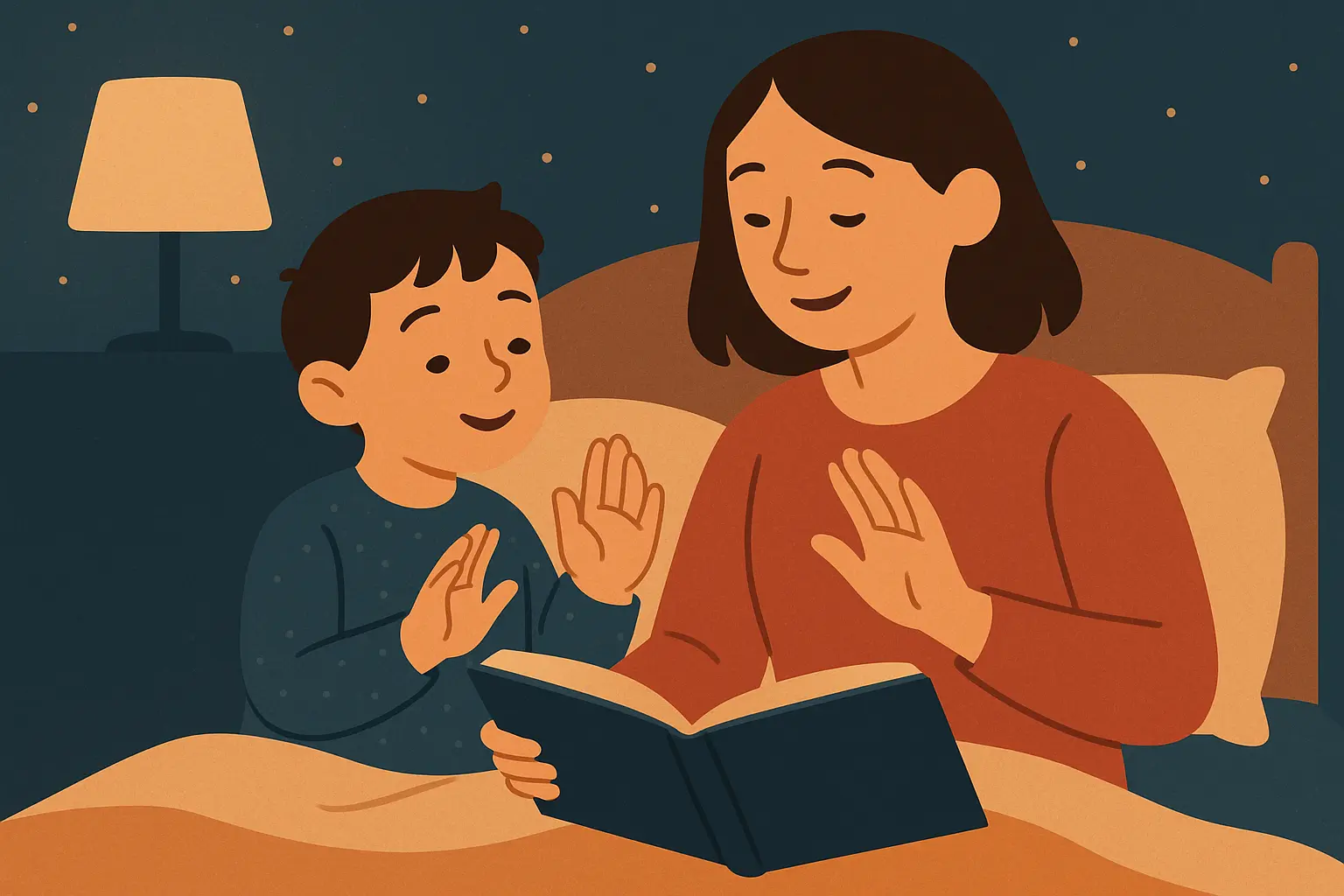
Why These Stories Actually Work for Sleep
Understanding why these bedtime stories work helps you make better choices for your specific kid and situation. Each selection has been tested against key criteria that determine bedtime effectiveness.
Quick Cheat Sheet for Busy Parents
Ages 2-3 (Toddlers): Brown Bear Brown Bear, Goodnight Moon, and Chicka Chicka Boom Boom use simple, repetitive language that matches toddler comprehension levels. These stories feature familiar objects, basic concepts, and predictable patterns that provide security.
Ages 3-5 (Preschoolers): The Very Hungry Caterpillar, Corduroy, and Five Little Monkeys offer slightly more complex stories while staying emotionally accessible. These address preschooler concerns about growth, belonging, and rule-following.
Ages 5-8 (School-age): Where the Wild Things Are, cultural folktales, and The Polar Express provide sophisticated themes that older kids can appreciate and discuss. These stories challenge thinking while staying bedtime-appropriate.
How These Stories Handle Emotions
High Comfort Stories: The Runaway Bunny, The Invisible String, and Goodnight Moon directly address separation anxiety and provide reassurance about parental love and security. These work particularly well for kids experiencing bedtime fears.
Emotional Processing Stories: Where the Wild Things Are, The Way I Feel, and The Rabbit Listened help kids understand and express emotions in healthy ways. These validate feelings while teaching regulation strategies.
Confidence Building Stories: The Empty Pot, What Should Danny Do?, and Journey celebrate authenticity, good choices, and creative problem-solving. These help kids feel capable and valued.
|
Story Type |
What They Do |
Best For |
How Long |
|---|---|---|---|
|
Classic Comfort |
Security, familiarity, routine building |
Anxious kids, bedtime resistance |
3-8 minutes |
|
Big Feelings |
Emotion vocabulary, coping skills |
Big emotions, transitions |
5-10 minutes |
|
Gentle Adventures |
Imagination, problem-solving |
Curious minds, creative kids |
8-12 minutes |
|
Cultural Stories |
Empathy, global awareness |
Expanding perspectives |
10-15 minutes |
|
Interactive Stories |
Participation, bonding |
Engagement, language development |
5-10 minutes |
|
Nature/Science |
Wonder, learning |
STEM interests, nature lovers |
8-12 minutes |
What Kids Actually Learn
Language Development: Rich vocabulary appears in The Polar Express and Where the Wild Things Are, while repetitive patterns in Brown Bear and Chicka Chicka Boom Boom support early reading skills. Rhyme and rhythm in Five Little Monkeys and We’re Going on a Bear Hunt develop sound awareness.
STEM Learning: Nature concepts emerge through The Great Kapok Tree and The Tiny Seed, while space and astronomy appear in The Moon Book. Counting and patterns feature in The Very Hungry Caterpillar and Five Little Monkeys.
Social-Emotional Learning: Empathy develops through The Rabbit Listened and Mama Panya’s Pancakes, while identity exploration appears in Thunder Boy Jr. and Last Stop on Market Street. Problem-solving skills emerge through What Should Danny Do? and The Day the Crayons Quit.

The Simple Science Behind Bedtime Reading
Look, I’m not a neuroscientist, but here’s what I’ve noticed: kids’ brains are like sponges at bedtime. They’re processing everything from the day while trying to wind down. A good story gives them something calm to focus on instead of worrying about tomorrow’s math test or whether there’s a monster under the bed.
How Stories Help Brains Develop
Stories activate multiple brain areas at once, strengthening pathways that support language development, emotional processing, and critical thinking. The predictable structure of quality bedtime stories helps kids’ brains organize information and prepare for rest.
Repetitive elements in stories like Brown Bear Brown Bear create brain patterns that support memory formation and language learning. The rhythm and rhyme in many bedtime stories activate areas of the brain associated with music and pattern recognition.
How Stories Help Kids Chill Out
Stories that address emotions help kids process daily experiences and develop coping strategies. When characters face challenges and find solutions, kids learn that problems can be solved and that they’re capable of handling difficulties.
The gradual calming that happens during story reading helps activate the part of the nervous system that promotes relaxation and sleep readiness. This biological response makes bedtime stories particularly effective for sleep preparation.
How Stories Build Bonds
Shared reading creates positive associations between parents, books, and bedtime routines. The physical closeness, shared attention, and emotional connection during story time strengthen parent-child bonds while making bedtime a positive experience rather than a battle.
Kids who associate reading with comfort and connection are more likely to become lifelong readers and to view bedtime positively rather than as separation from parents.
Understanding the science behind effective storytelling helps parents recognize why certain short story examples work better for bedtime than others, based on story structure and emotional impact.

Building Your Family’s Go-To Story Collection
Building your family’s bedtime story collection should reflect your kid’s changing needs, interests, and developmental stage. This process requires considering specific challenges while keeping variety and cultural diversity in your selections.
Figure Out What Your Kid Actually Needs
Consider your kid’s current challenges and interests when picking bedtime stories. Kids experiencing separation anxiety benefit from stories like The Invisible String and The Runaway Bunny, while those struggling with emotions need books like The Way I Feel and The Rabbit Listened.
Pay attention to your kid’s responses to different story types. Some kids prefer predictable, repetitive stories for comfort, while others enjoy gentle adventures or factual books about nature and science.
Mix Things Up With Seasonal Rotations
Rotate bedtime stories based on seasons, holidays, or current family situations. The Great Kapok Tree works well during Earth Day discussions, while The Polar Express fits winter months perfectly. This rotation keeps the collection fresh while addressing timely themes.
Consider your kid’s developmental milestones when rotating stories. Books about starting school, welcoming siblings, or moving to new homes can address specific life changes when they happen.
Balance Old Favorites with New Discoveries
Kids benefit from both familiar comfort stories and new discoveries. Beloved books provide security and predictability, while new stories expand horizons and maintain interest in reading.
Let kids request favorite stories repeatedly while gradually introducing new selections. The comfort of familiar stories supports emotional regulation, while new books challenge thinking and expand vocabulary.
When You Need Something Specific
Sometimes your family faces situations that regular published books don’t address directly. Moving to a new home, dealing with divorce, welcoming pets, or celebrating specific cultural traditions might require personalized storytelling approaches.
This is where custom story creation becomes invaluable. You can create stories that address your family’s specific circumstances while maintaining the calming, educational, and bonding benefits of traditional bedtime reading. Whether your kid needs stories about overcoming specific fears, celebrating unique family traditions, or processing particular life changes, personalized stories can fill gaps that even the best published books might miss.
For families needing customized content, Nairrate’s bedtime story generator can create personalized tales that address your child’s specific needs while maintaining all the essential bedtime story qualities discussed throughout this guide.

Here’s What I’ve Learned After Years of Bedtime Stories
These 25 carefully selected bedtime stories provide a foundation for creating meaningful, calming, and developmentally appropriate bedtime experiences. Each story has been chosen for its ability to engage kids while promoting the emotional regulation and peaceful mindset necessary for healthy sleep.
Remember that the perfect bedtime story for your family depends on your kid’s individual needs, developmental stage, and current interests. Some kids thrive with predictable, repetitive stories that provide comfort through familiarity, while others prefer gentle adventures or factual books that satisfy their curiosity about the world.
The key to successful bedtime reading lies in creating consistent, positive associations between reading, family bonding, and sleep preparation. When kids associate bedtime stories with comfort, connection, and security, they develop lifelong positive relationships with both reading and healthy sleep habits.
Real Talk About Bedtime Stories
Look, some nights you’ll phone it in with whatever book is closest. Some nights your kid will fall asleep during the first page. Some nights they’ll want to discuss every illustration in detail. All of this is completely normal parenting.
The “perfect” bedtime story is the one that gets your kid to sleep without a fight. Some nights that’s a classic like Goodnight Moon. Other nights it’s making up a story about their stuffed animals. The magic isn’t in the book—it’s in those quiet minutes together at the end of the day.
Don’t stress about having the “right” books or following all the rules. Your kid won’t remember if you skipped pages or made up words when you were too tired to read properly. They’ll remember that you showed up, snuggled close, and made bedtime feel safe and loved.
As your kid grows and their needs change, don’t hesitate to adapt your story selection and even explore personalized storytelling options that address your family’s unique circumstances and challenges. The goal is creating bedtime experiences that your kids will remember fondly and potentially pass on to their own families someday.
Whether you choose from these classic and modern selections or create your own using kids story generator tools, the most important element is maintaining the loving connection that makes bedtime stories such a treasured family tradition.
And hey, if all else fails, there’s always tomorrow night to try again.



Add comment